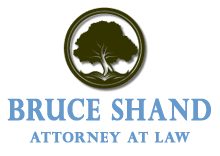Jump-Starting Your Estate Plan in Utah
Like so many things in life, taking care of your estate planning now is the right step, even if you don’t have any dependents. It’s a weight off your shoulders, and it leaves plans in place if the unthinkable were to happen to you.
It is official – 2014 is here to stay. Getting your estate plan in order should be on they top of your list of resolutions. How do you get started and get your planning squared away before 2015 rolls around?
Understandably, musing over matters of your own disability and death are not at the top of anyone’s list of “fun things to do,” they are a matter of personal, adult responsibility. In addition, plans can get rather complex when it comes to complex lives, complex families, and complex assets. As with most complex but essential matters in life, it is best to start with the basics.
Fortunately, U.S. News & World Report has helped you jump-start your estate planning basics with a recent article titled “4 Steps for Simple Estate Planning.” What are the four?
- Prepare a master information document. You should have a single collection of all the information your heirs will need from the location of important documents, to bank accounts, passwords, and lists of assets. Such information allows your heirs to step in when the time comes and to quickly assume command of what needs to be done, to the benefit of all of your loved ones.
- Purchase a term life insurance policy. Calculate the financial costs your loved ones might bear in your absence. Oftentimes, as good solution is life insurance which provides instant liquidity just when needed most.
- Write a will to ensure the right persons receive your possessions. Not only do you need to draft a will, but you need to keep it current. If you have a will with a few years on it, then it is time to dust it off and bring it up-to-date.
- Include guardianship plans in your will for your dependents. Assets aside, the most important “assets” for the parents of minor children are those children. Who would rear them to adulthood in your absence?
Take a look at the original article. You will enjoy the stories and bits of advice it offers as you consider your own plan. Although these four steps are important, they are by no means exhaustive. What issues arise when you ponder your own estate plan and how can they be resolved? Procrastination is simply not an option. Once you understand and appreciate what is at stake, bring in competent counsel to assist you and your family.
Reference: U.S. News & World Report (December 17, 2013) “4 Steps for Simple Estate Planning”






